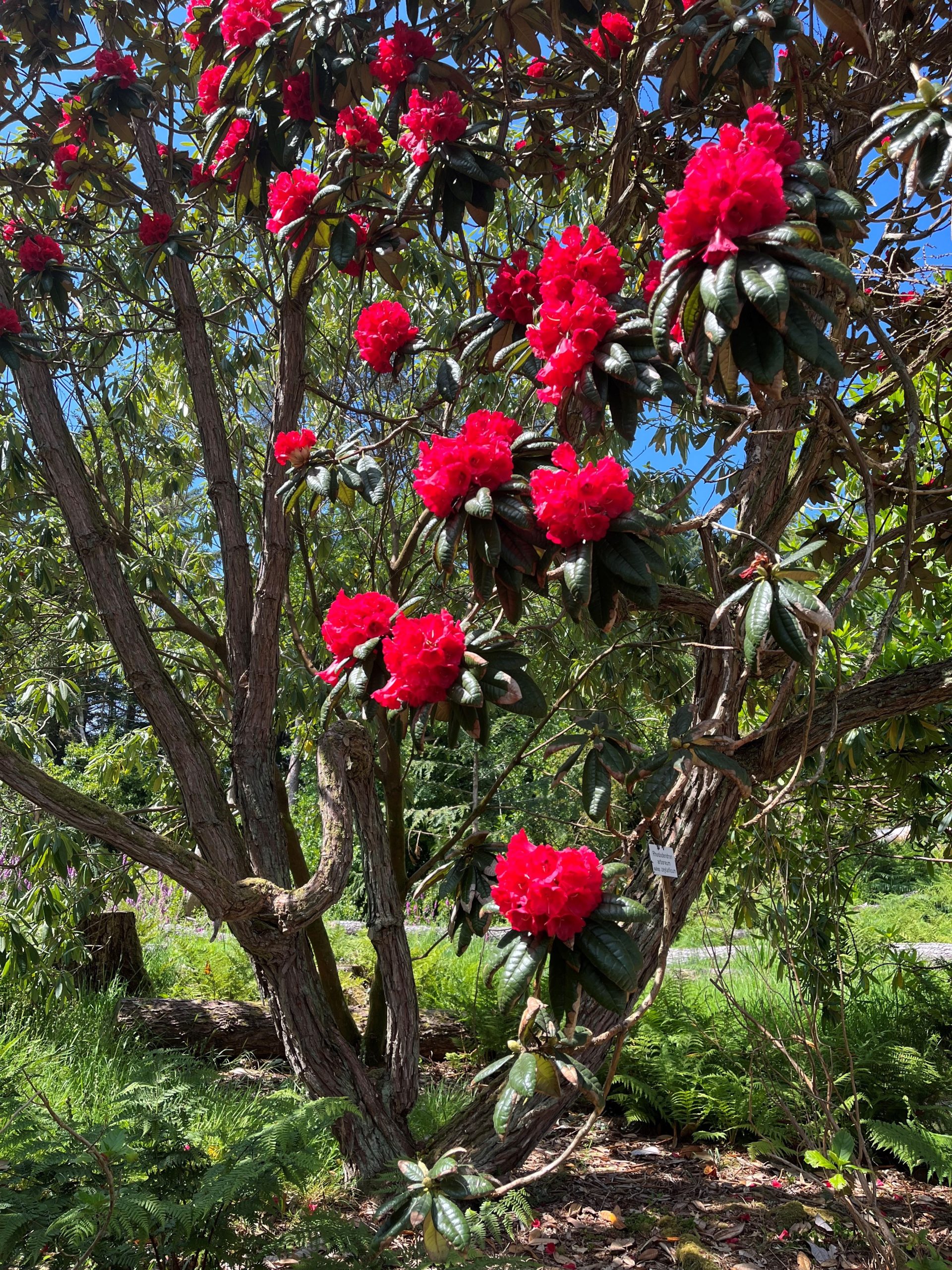Rare rhododendron planted before WW1 discovered in Argyll garden
A rare rhododendron planted before WW1 has been discovered at a coastal garden in Argyll – and is thought to be one of the largest in the UK.
The Rhododendron arboretum subsp. Zeylanicum was found at Arduaine, a 20-acre coastal garden in Argyll overlooking the Sound of Jura.
The garden was created in 1898 by tea planter James Arthur Campbell, who used his connections in the tea world to secure the seed in 1890.
It is rumoured to have come to Arduaine hidden in a chest of tea.
The plant was discovered as part of a National Trust for Scotland three-year project to meticulously document the plants across its 39 major gardens.
Year two of the PLANTS project has seen more than 32,000 plantings audited across 17 gardens.

Rhododendron arboretum subsp zeylanicum found at Arduaine Garden
More than 5,000 plants were audited at Arduaine, including a Wheel-Tree, towering nearly 60ft high.
The north of Scotland’s Leith Hall is home to an iconic rock garden designed by the last Laird of Leith Hall, Charles Leith-Hay in the 1920s.
The team auditing the property found Rhodohypoxis ‘Great Scot’ in the gardens, a South African bulb which has intense deep red-pink flowers.
It was bred by horticulturist Ruth McConnel who was probably one of the foremost growers of Rhodohypoxi in the world.
It got its name when her husband saw the beautifully deep colour of the new seedling and exclaimed ‘Great Scot!’.
At Inveresk Lodge Garden, near Edinburgh, the team identified a slew of unusual plants from Chocolate Vines (Akebia quinate) to Ovens Wattle (Acacia pravissima).
The plant common to New South Wales in Australia thrives in hot and dry conditions but can be found flourishing in the beautiful Musselburgh garden despite Scotland’s colder climate.
NTS is Scotland’s largest garden owner, estimated to be home to more than 100,000 plants.
‘This year we have made some remarkable findings across our gardens that give a glimpse into the lives of those that originally designed them,’ Dr Anna Florence, Curator of Plant Collections said:
‘Beyond finding plantings that were never on record before, the project enables us to gain a greater understanding of the original plantings and how we can best protect them and let them flourish for the future.
‘We’re excited as we look toward the final year of the project and the opportunity to share more data, learning and stories about Scotland’s rich horticultural heritage.’
Read more home and garden news from Scottish Field
Plus, don’t miss the November issue of Scottish Field magazine.
TAGS

